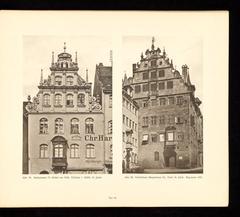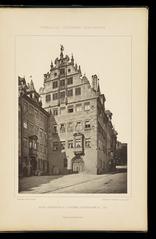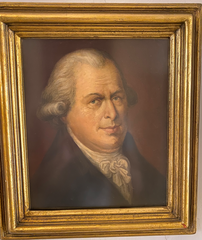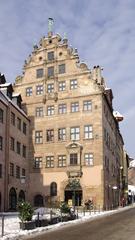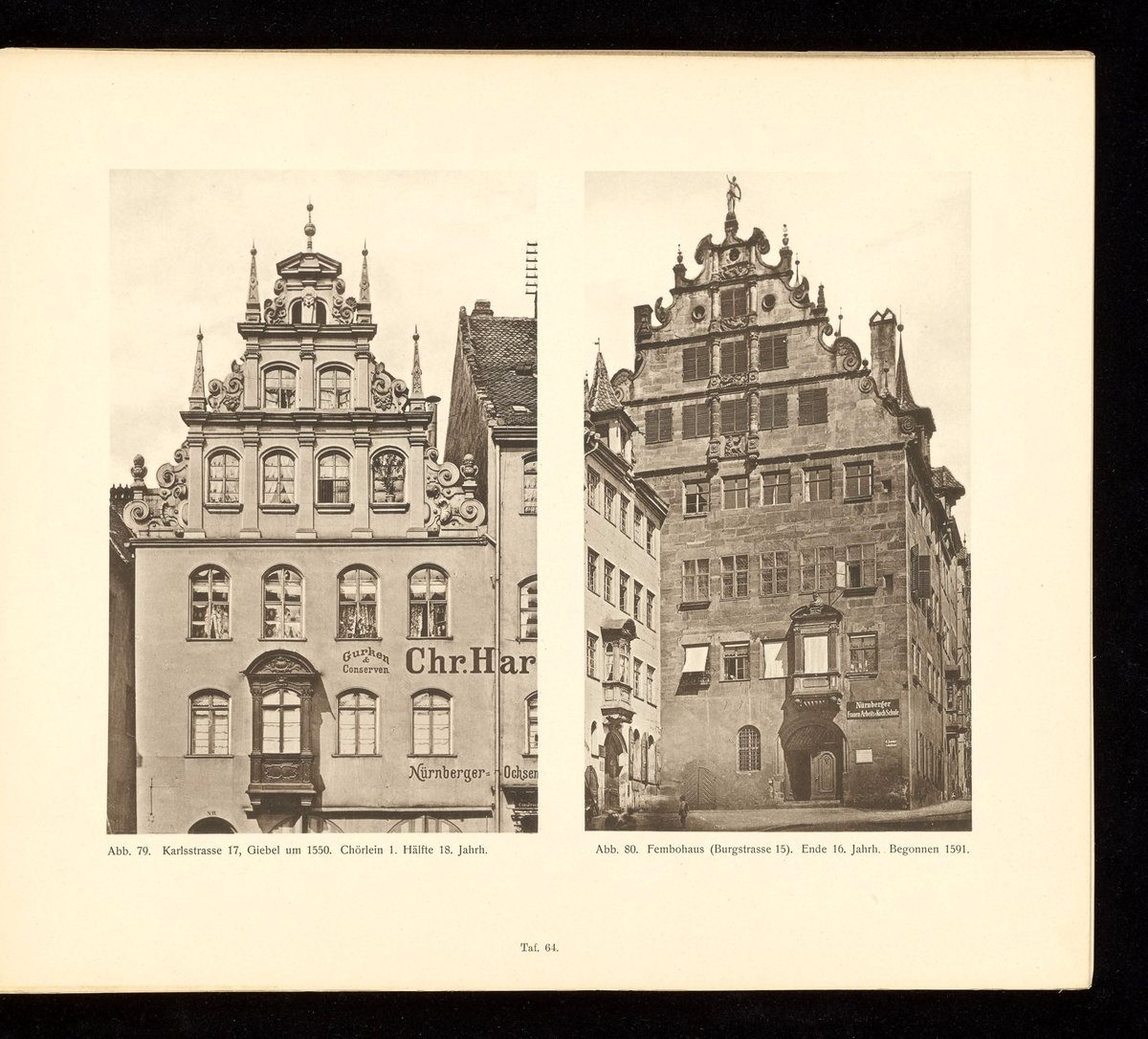
Stadtmuseum Fembohaus Nuremberg: Visiting Hours, Tickets, and Visitor Guide
Date: 15/06/2025
Introduction
Nestled in Nuremberg’s historic Old Town, the Stadtmuseum Fembohaus stands as an exquisite testament to the city’s mercantile, cultural, and architectural history. As the only surviving large late Renaissance merchant’s house in Nuremberg, the Fembohaus chronicles over 950 years of urban evolution — from its medieval roots to its role in European trade, the Reformation, and the challenges of the 20th century. Today, the museum offers an immersive experience, inviting visitors to explore authentic period rooms, permanent and rotating exhibitions, and the unique atmosphere of a meticulously preserved Renaissance mansion. This comprehensive guide provides essential details on visiting hours, ticketing, accessibility, and practical tips to help you plan your visit to one of Nuremberg’s most significant cultural landmarks (tourismus.nuernberg.de; museums.nuernberg.de; quartiere-nuernberg.de).
Table of Contents
- Introduction
- Historical and Architectural Highlights
- Visiting Hours and Ticket Information
- Location and Directions
- Facilities, Accessibility, and Visitor Services
- Exhibitions and Experiences
- Visitor Tips and FAQs
- Conclusion
- References
Historical and Architectural Highlights
Origins and Evolution
The Fembohaus was constructed between 1591 and 1596 for Dutch silk merchant Philipp van Oyrl. Its location on Burgstraße, strategically set between the city hall and Imperial Castle, underscored the influence of Nuremberg’s merchant elite during the Renaissance (tourismus.nuernberg.de). Later, the house was owned and preserved by art dealer Georg Christoph Franz Fembo, from whom it takes its name. Throughout its history, the building has served as a merchant residence, patrician mansion, and headquarters of the Homann Mapmakers, whose cartographic innovations are still visible in the museum’s collections (museums.nuernberg.de).
During World War II, the Fembohaus survived the widespread destruction that befell much of Nuremberg’s old town, allowing it to retain its original structure and interiors. Since 1953, it has functioned as the city’s municipal history museum.
Architectural and Cultural Significance
The Fembohaus is a prime example of southern German late Renaissance architecture, featuring a four-story sandstone façade, ornate gables, and large mullioned windows. Inside, visitors encounter:
- Dance Hall (Tanzsaal): Showcasing a magnificent 17th-century coffered ceiling.
- Baroque Vestibule: Italianate stuccowork and decorative details.
- “Beautiful Room” (Schöne Zimmer): Transferred from the Pellerhaus to preserve its painted ceilings and wood paneling (tourismus.nuernberg.de).
- Patrician Kitchen: Authentic glimpse into elite daily life.
- Mapmaker’s Workshop: Illustrating Nuremberg’s importance as a cartographic center.
The museum’s adaptive reuse preserves these historic elements while integrating modern accessibility and exhibition technologies (quartiere-nuernberg.de).
Visiting Hours and Ticket Information
Opening Hours
- Tuesday to Sunday: 10:00 AM – 5:00 PM
- Saturday & Sunday: Some listings note extended hours until 6:00 PM; confirm on the official website.
- Closed on Mondays and public holidays.
Ticket Prices
- Adults: €6.00
- Reduced Tickets: €4.00 (students, seniors, groups; some sources list €1.50 for school groups/students)
- Children under 18: Free
- Groups (15+): €5.00 per person
- Nuremberg Municipal Museums Day Pass: €9.00 (access to all participating municipal museums on the same day)
- Audio Guide: Included with admission, available in seven languages
Tickets are available at the entrance or online via select platforms (WhichMuseum).
Location and Directions
Address:
Burgstraße 15
90403 Nürnberg, Germany
The Fembohaus is centrally located, a short walk from St. Sebaldus Church, Imperial Castle, and Hauptmarkt.
Getting There
-
Public Transportation:
- U-Bahn: Lorenzkirche or Weißer Turm stations
- Tram Lines 4 or 6 to “Lorenzkirche”
- Bus stops and nearby parking garages available
-
From Nuremberg Central Station:
Walk or use public transit to reach the Old Town. -
Directions from St. Sebaldus Church:
Cross the square, turn left up a narrow street, then right at the T-junction; museum is on the corner (Ostrich Trails).
Facilities, Accessibility, and Visitor Services
Facilities
- Cloakroom/Lockers: Available for outerwear and bags
- Restrooms: Ground floor, including accessible toilets
- Museum Shop: Books, souvenirs, and local crafts
- Photography: Permitted for personal use (no flash or tripods; confirm with staff)
Accessibility
- Entrances: Street-level main entrance, with some thresholds
- Elevators: Limited; upper floors mainly accessible by stairs
- Wheelchair Access: Some areas are not fully accessible due to historic structure; ground floor facilities are accessible (museum website)
- Audio Guides: Seven languages (German, English, French, Italian, Spanish, Russian, Chinese)
- Service Animals: Permitted
Visitor Services
- Guided Tours: Available in German; English tours by arrangement; ideal for groups (advance booking recommended)
- Educational Programs: Tailored for school groups and families
- Interactive Elements: Virtual reality experiences (e.g., synagogue reconstruction), audio plays, city models, and multimedia installations
Exhibitions and Experiences
Permanent Exhibition
- “Krone – Macht – Geschichte” (“Crown – Power – History”): Explores Nuremberg’s development from 1050 to the present, using original rooms and artifacts to tell the story of the city’s political, cultural, and economic evolution.
- Original Interiors: Merchant’s hall, patrician quarters, kitchen, and mapmaker’s workshop furnished with authentic and period-appropriate objects.
Temporary Exhibitions
- Pressefoto Bayern 2024 (June 5 – July 6, 2025): Best of Bavarian press photography (exhibition calendar).
- Die Herkunft der Objekte (July 16 – September 30, 2025): Provenance research and Nuremberg’s history through museum objects.
Events
- Markt der schönen Dinge: Annual December market celebrating Nuremberg’s craft traditions.
Digital and Multimedia Offerings
- Virtual Tours and Online Resources: Digital walkthroughs, high-resolution images, and downloadable educational materials.
- Emerging Technologies: Integration of virtual and augmented reality experiences in development.
Visitor Tips and FAQs
Tips for Your Visit
- Best Times: Weekday mornings and early afternoons are quieter.
- Visit Duration: 45 minutes to 1.5 hours recommended.
- Language: Exhibit materials predominantly in German; audio guides and some materials available in English and other languages.
- Combined Visits: Use the Day Pass to visit other museums nearby, including the Albrecht Dürer House and Nuremberg Castle.
Frequently Asked Questions
Q: Are tickets available online?
A: Tickets are primarily sold on-site; some online advance booking is possible (WhichMuseum).
Q: Is the museum wheelchair accessible?
A: The ground floor and restrooms are accessible; upper floor access is limited due to the historic building (museum website).
Q: Are guided tours available in English?
A: English-speaking tours can be arranged with advance notice.
Q: Is photography allowed?
A: Yes, for personal use without flash or tripods.
Q: How do I get there via public transport?
A: The nearest U-Bahn stations are Lorenzkirche and Weißer Turm; tram lines 4 or 6 to “Lorenzkirche.”
Q: Are audio guides available?
A: Yes, included with admission in seven languages.
Conclusion
The Stadtmuseum Fembohaus is a must-visit for anyone wishing to explore Nuremberg’s rich historical tapestry, architectural beauty, and enduring spirit. Its preserved Renaissance interiors, engaging exhibitions, and thoughtful visitor services provide an authentic and memorable experience for solo travelers, families, and groups. Plan your visit around the museum’s opening hours and ticket options, and take advantage of combined passes to experience more of Nuremberg’s historical sites. For the latest updates on exhibitions, events, and accessibility, always consult the official museum website.
Download the Audiala app for interactive audio guides and follow Fembohaus on social media for news on special events and exhibitions. Discover the living history of Nuremberg at the Stadtmuseum Fembohaus — where every room tells a story, and every visit brings the past to life.
References and Further Reading
- Visiting Stadtmuseum Fembohaus: Hours, Tickets, History, and Nuremberg’s Historical Sites, 2025, (tourismus.nuernberg.de)
- Stadtmuseum Fembohaus Visitor Guide: Exploring Nuremberg’s Historic Renaissance Merchant’s House, 2025
- Visiting the Stadtmuseum Fembohaus: Hours, Tickets, and Nuremberg Historical Highlights, 2025, (museums.nuernberg.de)
- Visitor Information and Accessibility, 2025, (museen.nuernberg.de)
- City Museum at Fembo House Official Page, Nuremberg Tourism, (tourismus.nuernberg.de)
- Quartiere Burgviertel: City Museum in the Fembo House, (quartiere-nuernberg.de)
- Nuremberg Walking Tour (Ostrich Trails)
- City Museum at Fembo House: Tickets & Prices (WhichMuseum)
